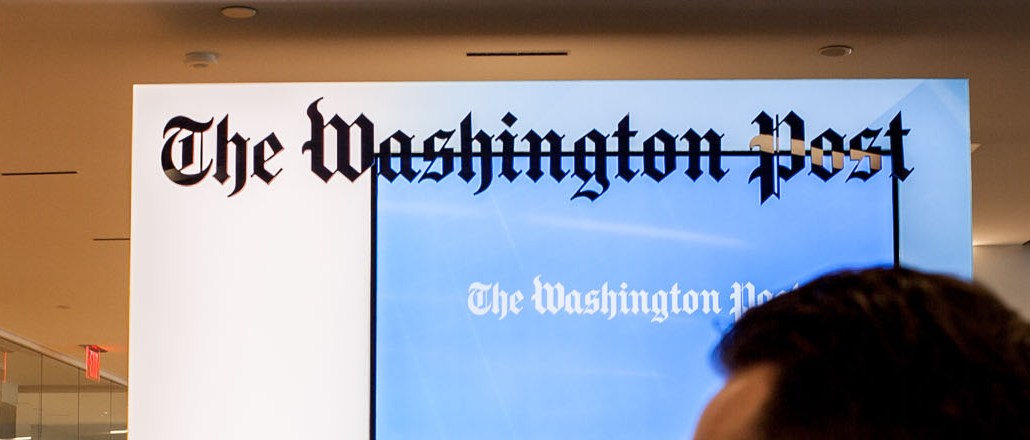Insights from CTV leaders at Dentsu, Horizon Media and more

The Washington Post has shown its ability to make big traffic gains, aggressively embracing social platforms like Facebook and pumping out more viral video fare. Last year, it made a big show of surpassing The New York Times in traffic, with multiplatform uniques now at 63 million, up 32 percent year over year, according to comScore.
But these days lots of traffic doesn’t automatically mean a healthy financial foundation for publishers. That’s why the Post is focused on getting people to open their wallets and subscribe once they start becoming regular readers. Being privately owned by Amazon founder Jeff Bezos, the Post doesn’t release much in the way of numbers, and digital circulation is said to be a minor part of the reported $60 million it collects in digital revenue. But digital-only subs have grown 145 percent year-over-year, mostly coming from the U.S. outside of D.C. and including a “significant” portion from overseas, according to Beth Diaz, vp of audience development and analytics.
The Post has been selling digital subs for three years, and its strategy has a number of prongs to it. First, there’s distributing the journalism to as wide an audience as possible, through social media; hence the Post publishes all its stories to Facebook Instant Articles. Taking advantage of Bezos’ role at Amazon, the paper also pushed out the brand by making its app free on the Amazon Kindle Fire tablet and offering free, six-month subs to Amazon Prime members. On the content side, it’s broadening the opinion and politics coverage, two areas that the Post said subscribers are especially interested in.
The No. 1 predictor of people subscribing is how much they read, so once people have sampled, the next step is to get them reading more. To that, the paper has cut page load time 85 percent and studied reader behavior to determine what articles to offer them next.
It’s also making a big push with email newsletters as loyalty tools. The Post has more than 50 newsletters, from general news to niche interests, such as books, and pop-up ones on specific topics such as North Korea and poetry. This has increased traffic to the site from newsletters by 129 percent in the past year and the addition of more than 1 million newsletter subscribers in the past year (in both cases the Post won’t say to what). The New York Times has found that people are twice as likely to subscribe if they already receive one of the paper’s newsletters.
The Post is also closing some site-access loopholes. People used to be able to read an unlimited number of articles when clicking through from a newsletter; more than a year ago, the Post started cutting them off at five articles; more recently, it’s closed the loophole for people coming from social media, which Diaz said boosted subs.
“What it shows is, sometimes people think if people are coming from social, they might not be as committed to the product,” she said. “But we were very pleased with what we saw in terms of increased subscriptions after making that change.”
Another way the Post is trying to encourage the reading habit is by serving pop-up messages to visitors after they’re read a given number of articles asking them to provide their email. In exchange, they get continued access to the site and a free trial subscription. Diaz wouldn’t share results of the test but claimed they’ve been “very successful.”
Scaling subscriptions won’t be easy, though. The Post is selling digital subs for about half ($99) that of a New York Times digital sub ($195). (It’s also been known for offering steep introductory discounts, but Diaz said the Post has had “good luck” renewing people at the regular price.) It won’t disclose its revenue split but sources said right now, subscriptions (print and digital) are about 30 percent of overall revenue.
“They need a couple million people to make subscription digital business at the low price point that would bring in more than 50 percent of their overall revenue [from readers],” said publishing analyst Ken Doctor.
The Post is also trying to join a club that’s very small — only a handful of news publications have been able to make digital subscription revenue a significant part of their business, and two of them, The Wall Street Journal and Financial Times, are business pubs that customers can write off. The Post’s general-interest coverage is not lacking free alternatives.
“There are very few digital publications people will pay for, and the Post and the Times may be the only two that can gain scale outside of the financial news category,” one former Post exec said.
There are people who still think all news should be free, but the tide is turning, which should benefit the Post, Diaz said. “There is an increasing openness among news consumers that creating quality journalism has a cost and it makes sense to pay for the product you’re consuming,” she said.
More in Media

Digiday+ Research: Publishers pull back their dependence on digital revenue
After a year in which publishers shifted their revenue dependence away from traditional channels and toward digital channels, 2025 has seen a shift back toward more of a balance between traditional and digital revenue sources.

LinkedIn makes it easier for creators to track performance across platforms
Creator data is becoming more accessible to third-party vendors via a new API — another step in LinkedIn’s creator platform evolution.

Ad Tech Briefing: The ‘plumbers’ posing as the unlikely saviors of the internet
After several false dawns, can Cloudflare’s ‘anti-AI scraping tool’ finally offer publishers a road to commercial redemption?








